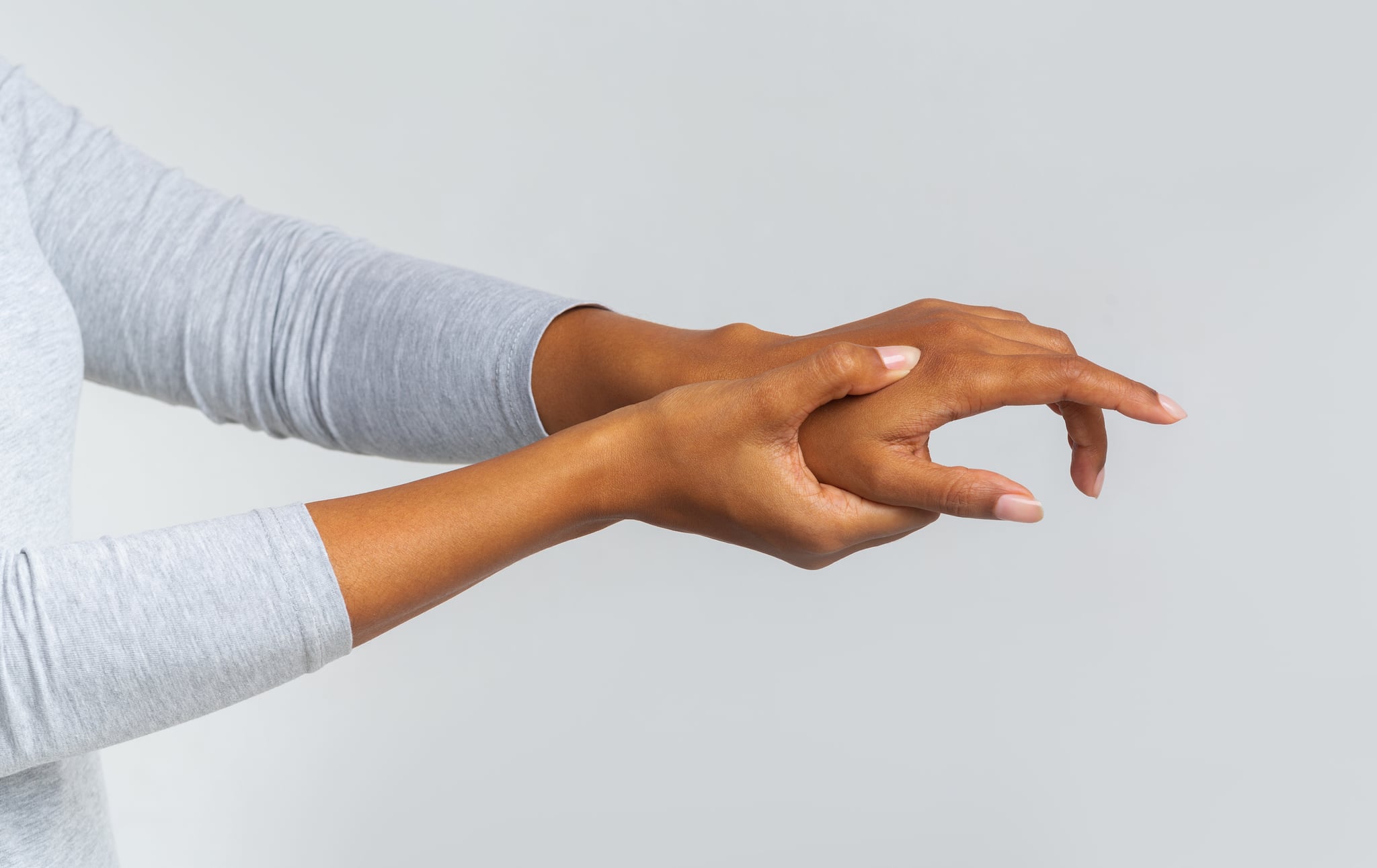
I've been working out around my knee pain for years [1] — swapping in low-impact exercises and joint-friendly moves for jumps and squats on the days where my discomfort is at a peak. But figuring out how to exercise without worsening hand pain is brand new to me — and unfortunately, still a work in progress.
Yoga was out, since I couldn't bear weight on my thumb without wincing, and gripping a dumbbell in my hand was not happening — to be honest, I didn't realise just how much I relied on my hands in all of my go-to workouts. Thankfully, the pain was a one-day affair, but it did make me curious if working out with a hand injury was possible, or even advised, so I checked in with Lucy McLeod [2], B. Physio, DPT,CHT, physical therapist and certified hand therapist at HSS. Ahead, the tips that are essential to keep in mind before getting in a sweat.
Understand Your Injury — and Check in With an Expert
This isn't the time to self-diagnose. If you're dealing with pain or an injury, it's of your best interest to speak with a professional, so you can care for it in the proper way — and prevent hanging up your sneakers for even longer! McLeod says it's crucial to understand your individual injury before exercising, or modifying your routine.
"Hands, wrists, fingers, and thumbs are a complex part of the body!" McLeod says. "There are a lot of different types of injury, or causes of pain, that need completely different types of treatment. Some injuries need rest, some injuries do better with exercise."
So, reach out to your doctor, or as McLeod suggests, a certified hand therapist, physical therapist, or occupational therapist that specialises in hand pain. "We have at least 4,000 hours of direct experience treating hand injuries and have passed a rigorous examination," McLeod says. "A certified hand therapist will be able to work with you to give you the best advice for your specific injury and workout preferences."
To find an expert in your area, McLeod suggests visiting the hand therapy certification commission website [3].
Modify
Depending on the injury, a hand therapist could suggest modifications to your exercise — again, this will really depend on the personalized advice of your doctor or medical expert. However, McLeod says some modification examples include doing push-ups on a closed fist or a push-up bar, instead of on your palms, or doing push-ups against a table, stairs, or a wall, instead of on the ground. Resistance bands or machines could replace free weights, while one might opt for forearm plants instead of holding the move on your hands.
Easing up your intensity also falls under the category of modification. "If you haven't worked out in a while, be sure to pace yourself!" McLeod suggests. "If you've had an injury, you probably won't be able to lift the same weights as before. Start with a weight and a workout intensity that feels a little challenging but still manageable. Then, gradually build up."
It's the perfect time to keep your form top of mind, as McLeod says that technique has a tendency to get sloppy when your body is trying to compensate for using other muscles. Put simply: "Quality of quantity!"
Explore Cardio
McLeod says keeping up with your cardio could be a great idea — after you've gotten the A-OK from your medical expert, of course (sense a theme?).
"Walking, jogging, and running are generally safe after most hand injuries," McLeod says. "You might want to avoid running out on trails or at night — in these situations, sometimes you're more likely to trip over something, which can affect your hands."
Your bike, however, could cause some issues, depending on your injury, so don't pedal off just yet. "Some hand injuries can be aggravated by prolonged gripping, such as gripping onto handlebars. But stationary cycling, where you don't have to grip so tightly (or at all) can be a good alternative."
McLeod also says that the treadmill, elliptical, or stair machine might also be safe to use, but adjusting your technique or intensity, so that you're only lightly gripping the handle might be necessary.
Click here for more health and wellness stories, tips, and news.

